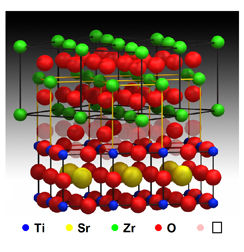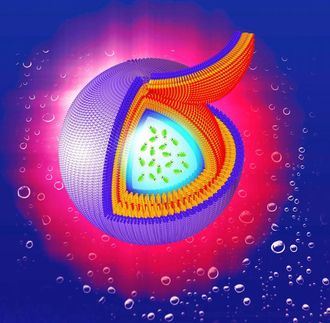Ames Laboratory researchers solve fuel-cell membrane structure conundrum
New model proposes parallel cylindrical water nanochannels
Fuel-cell cars are reaching commercial viability in today's increasingly eco-conscious society, but despite their promise, even scientists have struggled to explain just how the fuel-cell's central component - the proton exchange membrane - really works. However, a team of researchers at the U.S. Department of Energy's Ames Laboratory has offered a new model that provides the best explanation to date for the membrane's structure and how it functions. And armed with that information, scientists should be able to build similar fuel-cell membrane materials that are less expensive or have different properties, such as higher operating temperatures.
A fuel cell works by pumping hydrogen gas through the proton exchange membrane. In the process, the hydrogen gives up electrons in the form of electricity, then combines with oxygen gas to form water as the by-product. It can also work in reverse - when current is applied, water is split into its component gases, hydrogen and oxygen.
The model proposed by Ames Laboratory scientists Klaus Schmidt-Rohr and Qiang Chen, and detailed in Nature Materials, looked specifically at Nafion®, a widely used perfluorinated polymer film that stands out for its high selective permeability to water and protons. Schmidt-Rohr, who is also a professor of chemistry at Iowa State University, suggests that Nafion® has a closely packed network of nanoscale cylindrical water channels running in parallel through the material.
"From nuclear magnetic resonance (NMR), we know that Nafion® molecules have a rigid backbone structure with hair-like 'defects' along the chain," Schmidt-Rohr said, "but we didn't know just how these molecule were arranged. Some have proposed spheroidal water clusters, others a web-like network of water channels."
"Our theory is that these hydrophobic (water-hating) backbone structures cluster together," he continued, "to form long rigid cylinders about 2.5 nanometers in diameter with the hydrophilic 'hairs' to the inside of the water-filled tubes."
Though the cylinders in different parts of the sample may not align perfectly, they do connect to create water channels passing through the membrane material, which can be 10's of microns thick. It's this structure of relatively wide diameter channels, densely packed and running mostly parallel through the material that helps explain how water and protons can so easily diffuse through Nafion®, "almost as easily as water passing through water" Schmidt-Rohr said.
To unlock the structure mystery, Schmidt-Rohr turned to mathematical modeling of small-angle X-ray and neutron scattering, or SAXS/SANS. X-ray or neutron radiation is scattered by the sample and the resulting scattering pattern is analyzed to provide information about the size, shape and orientation of the components of the sample on the nanometer scale.
Using an algorithm known as multidimensional Fourier transformation, Schmidt-Rohr was able to show that his model of long, densely packed channels closely matches the known scattering data of Nafion®. Mathematical modeling of other proposed structures, in which the water clusters have other shapes or connectivities, did not match the measured scattering curves.
"Our model also helps explain how conductivity continues even well below the freezing point of water," Schmidt-Rohr said. "While water would freeze in the larger channels, it would continue to diffuse in the smaller-diameter pores."
Schmidt-Rohr added that additional analysis is needed to determine how the cylinders connect through the membrane.
Most read news

Get the analytics and lab tech industry in your inbox
By submitting this form you agree that LUMITOS AG will send you the newsletter(s) selected above by email. Your data will not be passed on to third parties. Your data will be stored and processed in accordance with our data protection regulations. LUMITOS may contact you by email for the purpose of advertising or market and opinion surveys. You can revoke your consent at any time without giving reasons to LUMITOS AG, Ernst-Augustin-Str. 2, 12489 Berlin, Germany or by e-mail at revoke@lumitos.com with effect for the future. In addition, each email contains a link to unsubscribe from the corresponding newsletter.
More news from our other portals
Last viewed contents
New Drug Delivery Techniques Aim to Improve Overall Drug Performance and Efficacy
Stay out, stray stem cells

























































